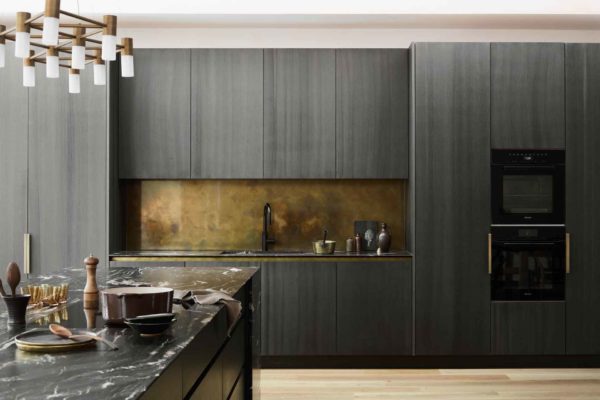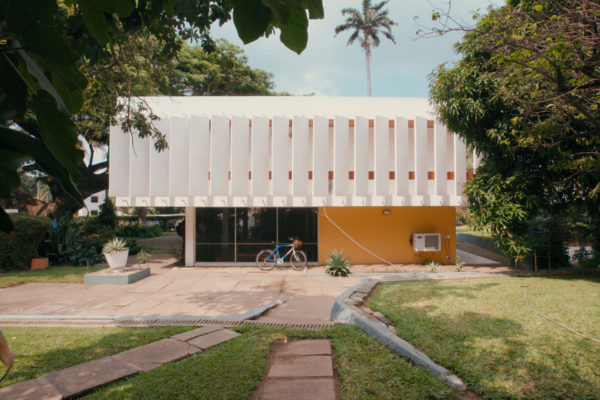Is The Kitchen Island Over?
By
1 year ago
Kitchen islands have become a staple in so many kitchens – but are they really necessary now, and are they even in style anymore?

For many, kitchen islands have, in recent years, become a must-have in the home, or at least an exciting goal to aspire to for their kitchens. And it’s clear why they are so beloved: islands undoubtedly provide a handy space in the middle of the kitchen in which to cook, eat, or entertain. But as with any relatively recent entry into the world of interior design, their growing popularity has left many wondering, is it now time to say goodbye to the kitchen island? Is a kitchen island an unnecessary encumbrance on our homes that has sadly gone out of style? Or is it still an essential and timeless piece of cabinetry that you shouldn’t be without?
Is The Kitchen Island Going Out Of Style?

Kitchen Makers
According to the experts we spoke to, the kitchen island is far from ‘over’ in 2024. In fact, many explain that they are seeing islands become a more popular staple than ever before. Tom Howley, Creative Design Director at the eponymous kitchen company, says: ‘The kitchen island isn’t going anywhere; it’s still very much a priority for many homeowners.’
‘Islands and new kitchen island ideas are even more popular as we demand more from our kitchens, as spaces for cooking, entertaining, socialising and working. These pieces still add character and functionality to our kitchens, and best of all, can be designed around how you want to use them.’
Mor Krisher, Head of Product Design at Caesarstone, agrees, explaining that kitchen islands continue to endure in homes thanks to their multipurpose offerings. ‘Kitchen islands are still a coveted feature,’ he assures. ‘They are the perfect combination of aesthetic beauty and functionality; a clever design will increase counter space, improve storage capacity with innovative storage options and even potentially add a dining option by way of a breakfast bar.’
So it seems that, according to the professionals, kitchen islands certainly aren’t going out of style in 2024. In fact, Nathan Kingbsury, Founder and Creative Director at Nathan Kingsbury Design, explains that an island is likely to only become more entrenched as an essential part of our kitchens going forward. ‘Kitchen island units may change and evolve over time, but they will continue to be relevant and are going nowhere anytime soon.’
‘A key aspect in creating a well designed, functional kitchen is the ability to create a number of ‘mini spaces’ or working areas within the wider space. By adding an island, you dramatically increase this possibility.’
Are 2-Tier Kitchen Islands Going Out Of Style?
A split-level island is a relatively new concept in the world of kitchen design – so most experts agree that they certainly aren’t going out of style just yet, and, like the kitchen island itself, they’re actually more in-demand than ever.
The experts at Naked Kitchens explain: ‘When it comes to the popularity of the kitchen island, if anything, there’s been a design evolution, with the latest iterations integrating display shelving and eye- catching split level counter tops.
‘These contemporary designs offer a perfect opportunity to play with finishes and mix materials for a super premium look.’
Not only are they a way to express yourself through your kitchen design, but two-tier islands are also vastly practical too. Sam Hart, senior designer at Roundhouse, explains, ‘We have done two-tier islands for a long time. A split-level island helpfully provides some privacy to the lower working section of the island, so that you don’t feel so exposed when entertaining.’
The same applies to island seating; a two-tier island allows for a natural area for guests or family members to sit, eat and drink away from the main counter space, which is primarily used for cooking, food preparation or washing up – creating both a relaxed social space and a practical space within the one unit.
So far from being out of style, a two-tier island may in fact be something you want to seriously consider if you’re planning an imminent renovation to your space.
2024 Kitchen Island Trends

Harvey Jones
Now that we’ve deduced that kitchen islands are absolutely not over in 2024, what sort of designs are rising in popularity, according to the experts?
Many designers share that they are seeing an increased desire for curves in kitchen islands, as opposed to the straight lines and harsher corners that are so typical. Melissa Klink, Creative director at Harvey Jones says: ‘As we enter 2024, we’re seeing the wider design trend for curves featuring in islands, with curved edges increasingly being chosen for the softness they can bring to a space.’
For Mor Krisher, it is exactly the delicate, gentle nature of curved kitchen islands that appeals to customers. ‘Beautifully organic, rounded edges immediately soften a space and bring feelings of calmness to the kitchen,’ he says.
‘These curved edges remind us of our natural surroundings, making us feel grounded and serene. Curves are inviting and are especially suited to family homes or those entertaining moments when guests can comfortably sit around the kitchen island.’
For kitchen island ideas that will truly stand out in 2024, Melissa also explains that one paint choice is rising in popularity. ‘Many of our clients choose to paint their island in a different shade to the rest of their kitchen to add impact or playfulness to their space,’ she suggests.
‘Similarly,’ Melissa says, ‘islands are also a great place to layer in a range of different premium materials that will make the entire room feel luxurious without going over budget. Granite is always a great option as every piece is unique, and there are so many stunning choices to suit your design. You could also make the island feel more decadent by choosing a thicker, 50-60mm top instead of the typical 20-30mm.’
Does A Kitchen Island Add Value To Your Home?
The question of whether a kitchen island truly adds to the value of your home or not is hotly disputed, but most interior and kitchen designers agree that generally, the kitchen is a vitally important area to get right if you’re looking to sell your home in the near future.
For Melissa, having a kitchen island as the star of the show can ‘absolutely’ boost the value of your home. She explains, ‘We often work with clients going through full home renovations and they always put the kitchen at the top of their priority for the house, knowing it is the room they will live in the most – but also because it will add the most value to their investment.’
For Sam, the key lies in the amount of work potential buyers view as needing to do to the home. He explains: ‘It [a kitchen island] could be the difference between getting the asking price or not. If a potential buyer loves the house but hates the kitchen, they typically immediately knock something in the region of £100,000 off the asking price, because they’re not really sure how much it will cost to replace the entire kitchen.’
A kitchen island also not only looks impressive, but it also ups the amount of counter space and storage space in the room immediately, which is likely to only be a bonus for potential future buyers.
Should You Put An Island In A Small Kitchen?

Harvey Jones
Given that islands are absolutely still ‘in style’ for 2024, you may be contemplating whether it’s worth adding a small island to your small kitchen – or wondering whether it’s something that will overwhelm the space.
Every kitchen is individual, and needs to be assessed on a case-by-case basis when it comes to whether or not an island would suit. But for most designers, while a kitchen island isn’t an immediate no for a smaller room, there are other layouts that may actually work better when it comes to making the most of the space you have.
‘You should only have an island if the space allows. There is nothing worse than trying to shoehorn an island into a space which is not quite big enough,’ Sam explains.
The key issue with a large kitchen island in a small kitchen is not allowing for enough ‘circulation space’ within the room – for example, an island in a small space could reduce the space you have for walking around and opening cabinet doors, rendering the space impractical.
Instead, Sam says: ‘sometimes peninsulas work better in this scenario, since you only need circulation at one end.’
Melissa agrees that a peninsula – or two worktops running parallel – can make more sense than even small kitchen islands in smaller homes and spaces. ‘If there isn’t space to include a freestanding island in a more compact kitchen, then it often makes most sense to connect it to the side wall of the main run, often as a peninsula or breakfast bar,’ she says.
‘That way you can enjoy the social and storage benefits of an island without the space becoming cramped. And if customers want the extra seating that comes with an island, it may be worth considering a peninsula off the end of the run with some bar stools, for example.’






